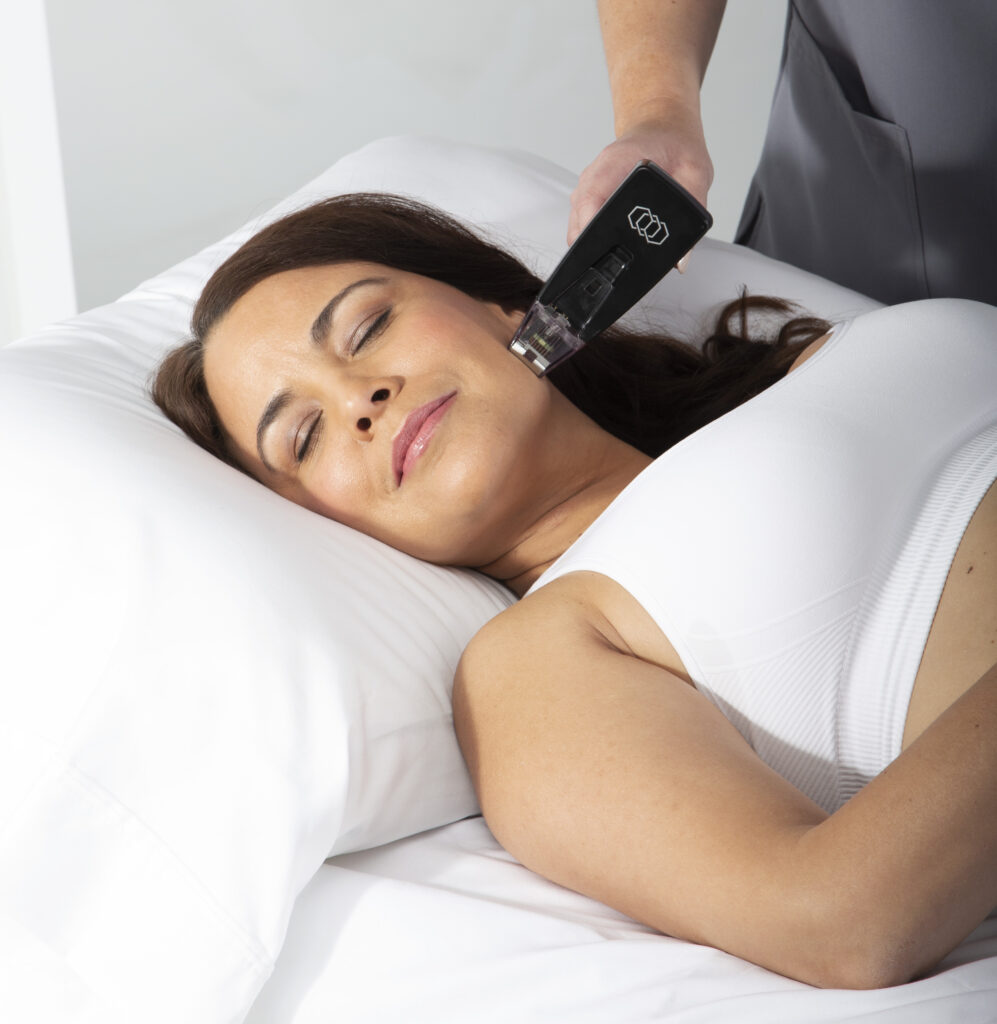Microneedling
 What is Microneedling?
What is Microneedling?
Microneedling is a process of creating tiny punctures in the skin, which stimulates the production of collagen and elastin. This can lead to smoother skin and improve the appearance of scars and pigmentation.
RF microneedling is an advanced version of traditional microneedling. By using radiofrequency energy, more collagen and elastin formation can be stimulated over a larger area.
How Does RF Microneedling Work?
When skin is damaged, the body repairs the injury by producing collagen and elastin. RF microneedling damages the skin in a controlled manner and as it heals, the skin becomes smoother and thicker.
This procedure is particularly effective in improving the appearance of fine lines, wrinkles, large pores, and acne scars. It can be useful for treating hyperpigmentation, loose skin, and small scars from injury or surgery.
With RF microneedling, the top layer of skin, or epidermis, is punctured with small needles. Then radiofrequency energy is used to heat the tissue in the dermis. This produces a stronger, more uniform effect than traditional microneedling.
Who Is a Good Candidate for RF Microneedling?
In order to experience the best results with RF microneedling, it’s important that you are:
- Healthy
- Have early signs of aging
- Have small scars
- Have realistic expectations
- Are able to follow post-procedure instructions closely
When is RF Microneedling Not Recommended?
RF microneedling may not be right if you:
- Are pregnant or breastfeeding
- Have a pacemaker or internal defibrillator
- Have a current skin infection
- Have a skin disease like psoriasis
- Have skin cancer or pre-malignant moles, or a history of skin cancer
- Are taking or have recently taken Accutane
- Are taking anticoagulants or have a history of bleeding disorders
Additionally, if you have had another type of cosmetic procedure recently, like dermabrasion, Botox, or a chemical peel, your provider may ask you to wait for a certain time period before the procedure can be performed.
RF microneedling may cause tattoos and permanent makeup to fade.
For people with darker skin types of Fitzpatrick Type V or VI, this procedure should be done with caution. Some devices may give better results than others for people with darker skin.
The Procedure
RF microneedling is done in the office. The procedure usually takes less than 30 minutes, though there is preparation that will make your appointment longer.
Before the procedure
Before you schedule your procedure, you’ll consult with your provider about your treatment goals. You’ll discuss your medical history and your medical history related to your skin. You should bring a list of any medications, supplements, and herbal supplements you are taking to share with your doctor.
During the procedure
First, your skin will be cleaned thoroughly to help prevent infection. A topical anesthetic will be applied to your skin and will take effect in about an hour. If needed, you may have an anesthetic injected into deeper areas.
The RF microneedling device will be used on the areas with specific settings tailored to you. You won’t feel anything due to the anesthetic and the treatment will last around 10-20 minutes.
Before you leave, a special topical cream may be applied. You may also be given a prescription for antibiotics for 1-3 days.
After the procedure
After treatment, you will be able to resume activity as normal. You’ll need to keep your skin clean for the first few days and you should avoid the sun. Small scabs may develop and you will need to be careful not to scratch or touch them.
After 1-3 days, you’ll be able to apply moisturizer, sunscreen, and makeup. You’ll need to take care not to use scrubs or exfoliators in the first several days after treatment.
Sunscreen with SPF 30 or more should be used for at least one month after each treatment, and excessive tanning should be avoided during the entire course of treatment.
Side Effects and Risks of RF Microneedling
Most people have a comfortable and successful treatment with excellent results. But side effects from RF microneedling are possible. They may include:
- Discomfort or pain
- Redness and swelling
- Change in pigmentation
- Infection
- Scarring
How Much Does RF Microneedling Cost?
RF microneedling varies in cost and is typically not covered by insurance. The cost of treatment depends on many factors, like:
- The expertise of your plastic surgeon
- The geographic location of your treatment
- The number of sessions needed for your customized treatment
If you think RF microneedling may be right for you, schedule a free consultation today!
